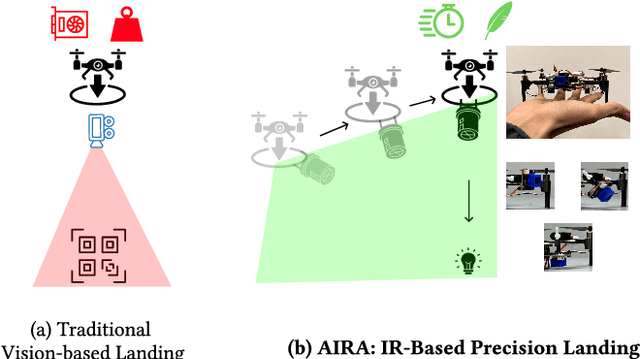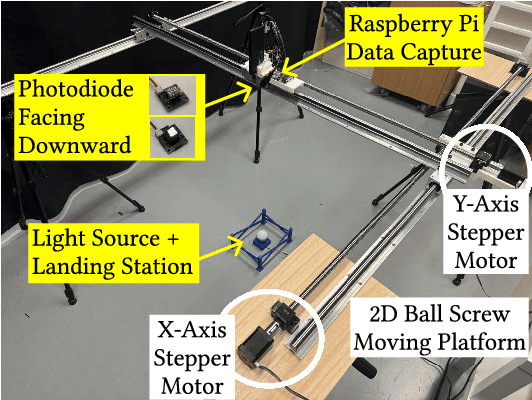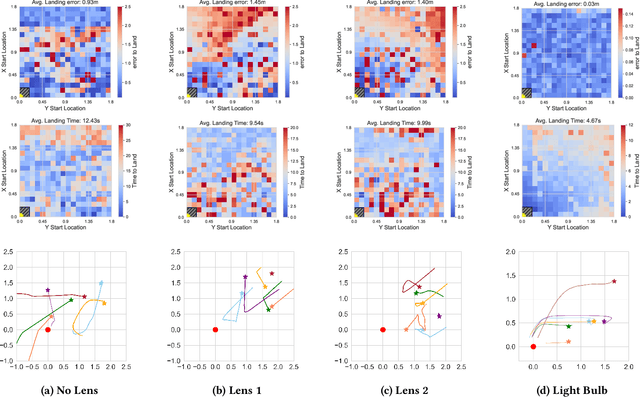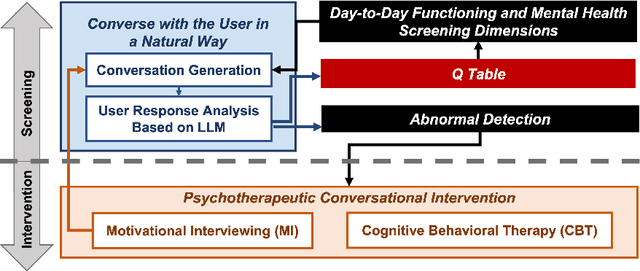Xiaofan Jiang
ContextAgent: Context-Aware Proactive LLM Agents with Open-World Sensory Perceptions
May 20, 2025Abstract:Recent advances in Large Language Models (LLMs) have propelled intelligent agents from reactive responses to proactive support. While promising, existing proactive agents either rely exclusively on observations from enclosed environments (e.g., desktop UIs) with direct LLM inference or employ rule-based proactive notifications, leading to suboptimal user intent understanding and limited functionality for proactive service. In this paper, we introduce ContextAgent, the first context-aware proactive agent that incorporates extensive sensory contexts to enhance the proactive capabilities of LLM agents. ContextAgent first extracts multi-dimensional contexts from massive sensory perceptions on wearables (e.g., video and audio) to understand user intentions. ContextAgent then leverages the sensory contexts and the persona contexts from historical data to predict the necessity for proactive services. When proactive assistance is needed, ContextAgent further automatically calls the necessary tools to assist users unobtrusively. To evaluate this new task, we curate ContextAgentBench, the first benchmark for evaluating context-aware proactive LLM agents, covering 1,000 samples across nine daily scenarios and twenty tools. Experiments on ContextAgentBench show that ContextAgent outperforms baselines by achieving up to 8.5% and 6.0% higher accuracy in proactive predictions and tool calling, respectively. We hope our research can inspire the development of more advanced, human-centric, proactive AI assistants.
An LLM-Empowered Low-Resolution Vision System for On-Device Human Behavior Understanding
May 03, 2025Abstract:The rapid advancements in Large Vision Language Models (LVLMs) offer the potential to surpass conventional labeling by generating richer, more detailed descriptions of on-device human behavior understanding (HBU) in low-resolution vision systems, such as depth, thermal, and infrared. However, existing large vision language model (LVLM) approaches are unable to understand low-resolution data well as they are primarily designed for high-resolution data, such as RGB images. A quick fixing approach is to caption a large amount of low-resolution data, but it requires a significant amount of labor-intensive annotation efforts. In this paper, we propose a novel, labor-saving system, Llambda, designed to support low-resolution HBU. The core idea is to leverage limited labeled data and a large amount of unlabeled data to guide LLMs in generating informative captions, which can be combined with raw data to effectively fine-tune LVLM models for understanding low-resolution videos in HBU. First, we propose a Contrastive-Oriented Data Labeler, which can capture behavior-relevant information from long, low-resolution videos and generate high-quality pseudo labels for unlabeled data via contrastive learning. Second, we propose a Physical-Knowledge Guided Captioner, which utilizes spatial and temporal consistency checks to mitigate errors in pseudo labels. Therefore, it can improve LLMs' understanding of sequential data and then generate high-quality video captions. Finally, to ensure on-device deployability, we employ LoRA-based efficient fine-tuning to adapt LVLMs for low-resolution data. We evaluate Llambda using a region-scale real-world testbed and three distinct low-resolution datasets, and the experiments show that Llambda outperforms several state-of-the-art LVLM systems up to $40.03\%$ on average Bert-Score.
Exploring Finetuned Audio-LLM on Heart Murmur Features
Jan 23, 2025



Abstract:Large language models (LLMs) for audio have excelled in recognizing and analyzing human speech, music, and environmental sounds. However, their potential for understanding other types of sounds, particularly biomedical sounds, remains largely underexplored despite significant scientific interest. In this study, we focus on diagnosing cardiovascular diseases using phonocardiograms, i.e., heart sounds. Most existing deep neural network (DNN) paradigms are restricted to heart murmur classification (healthy vs unhealthy) and do not predict other acoustic features of the murmur such as timing, grading, harshness, pitch, and quality, which are important in helping physicians diagnose the underlying heart conditions. We propose to finetune an audio LLM, Qwen2-Audio, on the PhysioNet CirCor DigiScope phonocardiogram (PCG) dataset and evaluate its performance in classifying 11 expert-labeled murmur features. Additionally, we aim to achieve more noise-robust and generalizable system by exploring a preprocessing segmentation algorithm using an audio representation model, SSAMBA. Our results indicate that the LLM-based model outperforms state-of-the-art methods in 8 of the 11 features and performs comparably in the remaining 3. Moreover, the LLM successfully classifies long-tail murmur features with limited training data, a task that all previous methods have failed to classify. These findings underscore the potential of audio LLMs as assistants to human cardiologists in enhancing heart disease diagnosis.
SocialMind: LLM-based Proactive AR Social Assistive System with Human-like Perception for In-situ Live Interactions
Dec 05, 2024



Abstract:Social interactions are fundamental to human life. The recent emergence of large language models (LLMs)-based virtual assistants has demonstrated their potential to revolutionize human interactions and lifestyles. However, existing assistive systems mainly provide reactive services to individual users, rather than offering in-situ assistance during live social interactions with conversational partners. In this study, we introduce SocialMind, the first LLM-based proactive AR social assistive system that provides users with in-situ social assistance. SocialMind employs human-like perception leveraging multi-modal sensors to extract both verbal and nonverbal cues, social factors, and implicit personas, incorporating these social cues into LLM reasoning for social suggestion generation. Additionally, SocialMind employs a multi-tier collaborative generation strategy and proactive update mechanism to display social suggestions on Augmented Reality (AR) glasses, ensuring that suggestions are timely provided to users without disrupting the natural flow of conversation. Evaluations on three public datasets and a user study with 20 participants show that SocialMind achieves 38.3% higher engagement compared to baselines, and 95% of participants are willing to use SocialMind in their live social interactions.
AIRA: A Low-cost IR-based Approach Towards Autonomous Precision Drone Landing and NLOS Indoor Navigation
Jul 08, 2024



Abstract:Automatic drone landing is an important step for achieving fully autonomous drones. Although there are many works that leverage GPS, video, wireless signals, and active acoustic sensing to perform precise landing, autonomous drone landing remains an unsolved challenge for palm-sized microdrones that may not be able to support the high computational requirements of vision, wireless, or active audio sensing. We propose AIRA, a low-cost infrared light-based platform that targets precise and efficient landing of low-resource microdrones. AIRA consists of an infrared light bulb at the landing station along with an energy efficient hardware photodiode (PD) sensing platform at the bottom of the drone. AIRA costs under 83 USD, while achieving comparable performance to existing vision-based methods at a fraction of the energy cost. AIRA requires only three PDs without any complex pattern recognition models to accurately land the drone, under $10$cm of error, from up to $11.1$ meters away, compared to camera-based methods that require recognizing complex markers using high resolution images with a range of only up to $1.2$ meters from the same height. Moreover, we demonstrate that AIRA can accurately guide drones in low light and partial non line of sight scenarios, which are difficult for traditional vision-based approaches.
DrHouse: An LLM-empowered Diagnostic Reasoning System through Harnessing Outcomes from Sensor Data and Expert Knowledge
May 21, 2024Abstract:Large language models (LLMs) have the potential to transform digital healthcare, as evidenced by recent advances in LLM-based virtual doctors. However, current approaches rely on patient's subjective descriptions of symptoms, causing increased misdiagnosis. Recognizing the value of daily data from smart devices, we introduce a novel LLM-based multi-turn consultation virtual doctor system, DrHouse, which incorporates three significant contributions: 1) It utilizes sensor data from smart devices in the diagnosis process, enhancing accuracy and reliability. 2) DrHouse leverages continuously updating medical databases such as Up-to-Date and PubMed to ensure our model remains at diagnostic standard's forefront. 3) DrHouse introduces a novel diagnostic algorithm that concurrently evaluates potential diseases and their likelihood, facilitating more nuanced and informed medical assessments. Through multi-turn interactions, DrHouse determines the next steps, such as accessing daily data from smart devices or requesting in-lab tests, and progressively refines its diagnoses. Evaluations on three public datasets and our self-collected datasets show that DrHouse can achieve up to an 18.8% increase in diagnosis accuracy over the state-of-the-art baselines. The results of a 32-participant user study show that 75% medical experts and 91.7% patients are willing to use DrHouse.
TRAMBA: A Hybrid Transformer and Mamba Architecture for Practical Audio and Bone Conduction Speech Super Resolution and Enhancement on Mobile and Wearable Platforms
May 02, 2024Abstract:We propose TRAMBA, a hybrid transformer and Mamba architecture for acoustic and bone conduction speech enhancement, suitable for mobile and wearable platforms. Bone conduction speech enhancement has been impractical to adopt in mobile and wearable platforms for several reasons: (i) data collection is labor-intensive, resulting in scarcity; (ii) there exists a performance gap between state of-art models with memory footprints of hundreds of MBs and methods better suited for resource-constrained systems. To adapt TRAMBA to vibration-based sensing modalities, we pre-train TRAMBA with audio speech datasets that are widely available. Then, users fine-tune with a small amount of bone conduction data. TRAMBA outperforms state-of-art GANs by up to 7.3% in PESQ and 1.8% in STOI, with an order of magnitude smaller memory footprint and an inference speed up of up to 465 times. We integrate TRAMBA into real systems and show that TRAMBA (i) improves battery life of wearables by up to 160% by requiring less data sampling and transmission; (ii) generates higher quality voice in noisy environments than over-the-air speech; (iii) requires a memory footprint of less than 20.0 MB.
RASP: A Drone-based Reconfigurable Actuation and Sensing Platform Towards Ambient Intelligent Systems
Mar 19, 2024Abstract:Realizing consumer-grade drones that are as useful as robot vacuums throughout our homes or personal smartphones in our daily lives requires drones to sense, actuate, and respond to general scenarios that may arise. Towards this vision, we propose RASP, a modular and reconfigurable sensing and actuation platform that allows drones to autonomously swap onboard sensors and actuators in only 25 seconds, allowing a single drone to quickly adapt to a diverse range of tasks. RASP consists of a mechanical layer to physically swap sensor modules, an electrical layer to maintain power and communication lines to the sensor/actuator, and a software layer to maintain a common interface between the drone and any sensor module in our platform. Leveraging recent advances in large language and visual language models, we further introduce the architecture, implementation, and real-world deployments of a personal assistant system utilizing RASP. We demonstrate that RASP can enable a diverse range of useful tasks in home, office, lab, and other indoor settings.
LLM-based Conversational AI Therapist for Daily Functioning Screening and Psychotherapeutic Intervention via Everyday Smart Devices
Mar 16, 2024



Abstract:Despite the global mental health crisis, access to screenings, professionals, and treatments remains high. In collaboration with licensed psychotherapists, we propose a Conversational AI Therapist with psychotherapeutic Interventions (CaiTI), a platform that leverages large language models (LLM)s and smart devices to enable better mental health self-care. CaiTI can screen the day-to-day functioning using natural and psychotherapeutic conversations. CaiTI leverages reinforcement learning to provide personalized conversation flow. CaiTI can accurately understand and interpret user responses. When the user needs further attention during the conversation, CaiTI can provide conversational psychotherapeutic interventions, including cognitive behavioral therapy (CBT) and motivational interviewing (MI). Leveraging the datasets prepared by the licensed psychotherapists, we experiment and microbenchmark various LLMs' performance in tasks along CaiTI's conversation flow and discuss their strengths and weaknesses. With the psychotherapists, we implement CaiTI and conduct 14-day and 24-week studies. The study results, validated by therapists, demonstrate that CaiTI can converse with users naturally, accurately understand and interpret user responses, and provide psychotherapeutic interventions appropriately and effectively. We showcase the potential of CaiTI LLMs to assist the mental therapy diagnosis and treatment and improve day-to-day functioning screening and precautionary psychotherapeutic intervention systems.
 Add to Chrome
Add to Chrome Add to Firefox
Add to Firefox Add to Edge
Add to Edge